Preparation of Esterified Starches with Different Amylose Content and Their Blending with Polybutylene Succinate
Abstract
:1. Introduction
2. Results and Discussion
2.1. Evaluation of Starch Esterification
2.2. Crystal Structure Analysis
2.3. Morphological Observations
2.4. Thermal Performance Analysis
2.5. The Properties of Esterified Starch/PBS Blends
2.5.1. Tensile Test
2.5.2. Water Contact Angle (WCA) Test
2.5.3. Dynamic Mechanical Analysis
2.5.4. Enzymatic Degradation
3. Materials and Methods
3.1. Preparation of Esterified Starch
3.2. Blending of Esterified Starch/PBS Composites
3.3. Characterization of Esterified Starch and Esterified Starch/PBS Composites
3.3.1. Fourier Transform Infrared Spectroscopy (FTIR)
3.3.2. Powder X-ray Diffraction (XRD) Analysis
3.3.3. Scanning Electron Microscopy (SEM)
3.3.4. Thermogravimetric Analysis (TGA)
3.3.5. Water Contact Angle (WCA)
3.3.6. Tensile Test
3.3.7. Dynamic Mechanical Analysis
3.4. Enzymatic Degradation of Esterified Starch/PBS Composites
3.5. Statistical Analysis
4. Conclusions
Author Contributions
Funding
Institutional Review Board Statement
Informed Consent Statement
Data Availability Statement
Conflicts of Interest
Abbreviations
References
- Kim, M.S.; Chang, H.; Zheng, L.; Yan, Q.; Pfleger, B.F.; Klier, J.; Nelson, K.; Majumder, E.L.W.; Huber, G.W. A review of biodegradable plastics: Chemistry, applications, properties, and future research needs. Chem. Rev. 2023, 123, 9915–9939. [Google Scholar] [CrossRef] [PubMed]
- Kim, H.S.; Yang, H.S.; Kim, H.J. Biodegradability and mechanical properties of agro-flour–filled polybutylene succinate biocomposites. J. Appl. Polym. Sci. 2005, 97, 1513–1521. [Google Scholar] [CrossRef]
- Vasil’ev, I.Y.; Anan’ev, V.V.; Kolpakova, V.V. Biodegradable materials based on low-density polyethylene, starch, and monoglycerides. Polym. Sci. Ser. D 2022, 15, 729–733. [Google Scholar] [CrossRef]
- Lai, S.M.; Huang, C.K.; Shen, H.F. Preparation and properties of biodegradable poly(butylene succinate)/starch blends. J. Appl. Polym. Sci. 2005, 97, 257–264. [Google Scholar] [CrossRef]
- Li, J.; Luo, X.; Lin, X.; Zhou, Y. Comparative study on the blends of pbs/thermoplastic starch prepared from waxy and normal corn starches. Starch-Stärke 2013, 65, 831–839. [Google Scholar] [CrossRef]
- San, H.; Harnkarnsujarit, N. Sulfite incorporated thermoplastic cassava starch blended pbat blown films as antimicrobial and antibrowning packaging. Ind. Crops Prod. 2023, 206, 117610. [Google Scholar] [CrossRef]
- Phattarateera, S.; Xin, L.; Amphong, C.; Limsamran, V.; Threepopnatkul, P. Comparative studies of starch blends on the properties of pva films. Carbohydr. Polym. Technol. Appl. 2023, 6, 100340. [Google Scholar] [CrossRef]
- Srihanam, P.; Srisuwan, Y.; Phromsopha, T.; Manphae, A.; Baimark, Y. Improvement in phase compatibility and mechanical properties of poly(l-lactide)-b-poly(ethylene glycol)-b-poly(l-lactide)/thermoplastic starch blends with citric acid. Polymers 2023, 15, 3966. [Google Scholar] [CrossRef] [PubMed]
- Zuo, Y.; Gu, J.; Yang, L.; Qiao, Z.; Tan, H.; Zhang, Y. Preparation and characterization of dry method esterified starch/polylactic acid composite materials. Int. J. Biol. Macromol. 2014, 64, 174–180. [Google Scholar] [CrossRef]
- Kim, J.; Bang, J.; Park, S.; Jung, M.; Jung, S.; Yun, H.; Kim, J.-H.; Choi, I.-G.; Kwak, H.W. Enhanced barrier properties of biodegradable pbat/acetylated lignin films. Sustain. Mater. Technol. 2023, 37, e00686. [Google Scholar] [CrossRef]
- Rajan, A.; Sudha, J.D.; Abraham, T.E. Enzymatic modification of cassava starch by fungal lipase. Ind. Crops Prod. 2008, 27, 50–59. [Google Scholar] [CrossRef]
- Xue, X.; Liang, Q.; Gao, Q.; Luo, Z. One-step synthesis of cross-linked esterified starch and its properties. Appl. Sci. 2022, 12, 4075. [Google Scholar] [CrossRef]
- Li, M.N.; Xie, Y.; Chen, H.Q.; Zhang, B. Effects of heat-moisture treatment after citric acid esterification on structural properties and digestibility of wheat starch, a- and b-type starch granules. Food Chem. 2019, 272, 523–529. [Google Scholar] [CrossRef]
- Wanchoo, R.K.; Sharma, P.K. Viscometric study on the compatibility of some water-soluble polymer–polymer mixtures. Eur. Polym. J. 2003, 39, 1481–1490. [Google Scholar] [CrossRef]
- Sashiwa, H.; Aiba, S. Chemically modified chitin and chitosan as biomaterials. Prog. Polym. Sci. 2004, 29, 887–908. [Google Scholar] [CrossRef]
- Haq, F.; Yu, H.; Wang, L.; Teng, L.; Haroon, M.; Khan, R.U.; Mehmood, S.; Bilal Ul, A.; Ullah, R.S.; Khan, A.; et al. Advances in chemical modifications of starches and their applications. Carbohydr. Res. 2019, 476, 12–35. [Google Scholar] [CrossRef]
- Hu, X.; Gao, Z.; Wang, Z.; Su, T.; Yang, L.; Li, P. Enzymatic degradation of poly(butylene succinate) by cutinase cloned from Fusarium solani. Polym. Degrad. Stab. 2016, 134, 211–219. [Google Scholar] [CrossRef]
- Cerclé, C.; Sarazin, P.; Favis, B.D. High performance polyethylene/thermoplastic starch blends through controlled emulsification phenomena. Carbohydr. Polym. 2013, 92, 138–148. [Google Scholar] [CrossRef] [PubMed]
- Wootthikanokkhan, J.; Wongta, N.; Sombatsompop, N.; Kositchaiyong, A.; Wong-On, J.; Isarankura na Ayutthaya, S.; Kaabbuathong, N. Effect of blending conditions on mechanical, thermal, and rheological properties of plasticized poly(lactic acid)/maleated thermoplastic starch blends. J. Appl. Polym. Sci. 2012, 124, 1012–1019. [Google Scholar] [CrossRef]
- Chen, P.; Yu, L.; Simon, G.P.; Liu, X.; Dean, K.; Chen, L. Internal structures and phase-transitions of starch granules during gelatinization. Carbohydr. Polym. 2011, 83, 1975–1983. [Google Scholar] [CrossRef]
- Sun, Y.; Hu, Q.; Qian, J.; Li, T.; Ma, P.; Shi, D.; Dong, W.; Chen, M. Preparation and properties of thermoplastic poly(caprolactone) composites containing high amount of esterified starch without plasticizer. Carbohydr. Polym. 2016, 139, 28–34. [Google Scholar] [CrossRef] [PubMed]
- Cho, H.S.; Moon, H.S.; Kim, M.; Nam, K.; Kim, J.Y. Biodegradability and biodegradation rate of poly(caprolactone)-starch blend and poly(butylene succinate) biodegradable polymer under aerobic and anaerobic environment. Waste Manag. 2011, 31, 475–480. [Google Scholar] [CrossRef] [PubMed]
- Kim, H.-S.; BeMiller, J.N. Effects of hydrocolloids on the pasting and paste properties of commercial pea starch. Carbohydr. Polym. 2012, 88, 1164–1171. [Google Scholar] [CrossRef]
- Dean, K.; Yu, L.; Bateman, S.; Wu, D.Y. Gelatinized starch/biodegradable polyester blends: Processing, morphology, and properties. J. Appl. Polym. Sci. 2007, 103, 802–811. [Google Scholar] [CrossRef]
- Luo, X.; Li, J.; Lin, X. Effect of gelatinization and additives on morphology and thermal behavior of corn starch/pva blend films. Carbohydr. Polym. 2012, 90, 1595–1600. [Google Scholar] [CrossRef] [PubMed]
- Liu, S.; Yuan, T.Z.; Wang, X.; Reimer, M.; Isaak, C.; Ai, Y. Behaviors of starches evaluated at high heating temperatures using a new model of rapid visco analyzer—rva 4800. Food Hydrocoll. 2019, 94, 217–228. [Google Scholar] [CrossRef]
- Soares, G.A.; Castro, A.D.d.; Cury, B.S.F.; Evangelista, R.C. Blends of cross-linked high amylose starch/pectin loaded with diclofenac. Carbohydr. Polym. 2013, 91, 135–142. [Google Scholar] [CrossRef] [PubMed]
- Hashemi Gahruie, H.; Eskandari, M.H.; Van der Meeren, P.; Hosseini, S.M.H. Study on hydrophobic modification of basil seed gum-based (bsg) films by octenyl succinate anhydride (osa). Carbohydr. Polym. 2019, 219, 155–161. [Google Scholar] [CrossRef] [PubMed]
- Gao, C.; Yu, L.; Liu, H.; Chen, L. Development of self-reinforced polymer composites. Prog. Polym. Sci. 2012, 37, 767–780. [Google Scholar] [CrossRef]
- Yan, D.; Wang, W.J.; Zhu, S. Effect of long chain branching on rheological properties of metallocene polyethylene. Polymer 1999, 40, 1737–1744. [Google Scholar] [CrossRef]
- Bai, Z.; Liu, Y.; Su, T.; Wang, Z. Effect of hydroxyl monomers on the enzymatic degradation of poly(ethylene succinate), poly(butylene succinate), and poly(hexylene succinate). Polymers 2018, 10, 90. [Google Scholar] [CrossRef] [PubMed]
- Dutra, L.; Pinto, M.C.C.; Lima, R.C.; Franco, M.; Viana, M.; Cipolatti, E.P.; Manoel, E.A.; Freire, D.M.G.; Pinto, J.C. Preparation of polymer microparticles through non-aqueous suspension polycondensations: Part vi—Analyses of chemical and enzymatic degradation of poly(butylene succinate) (pbs). J. Polym. Environ. 2022, 30, 1893–1907. [Google Scholar] [CrossRef]

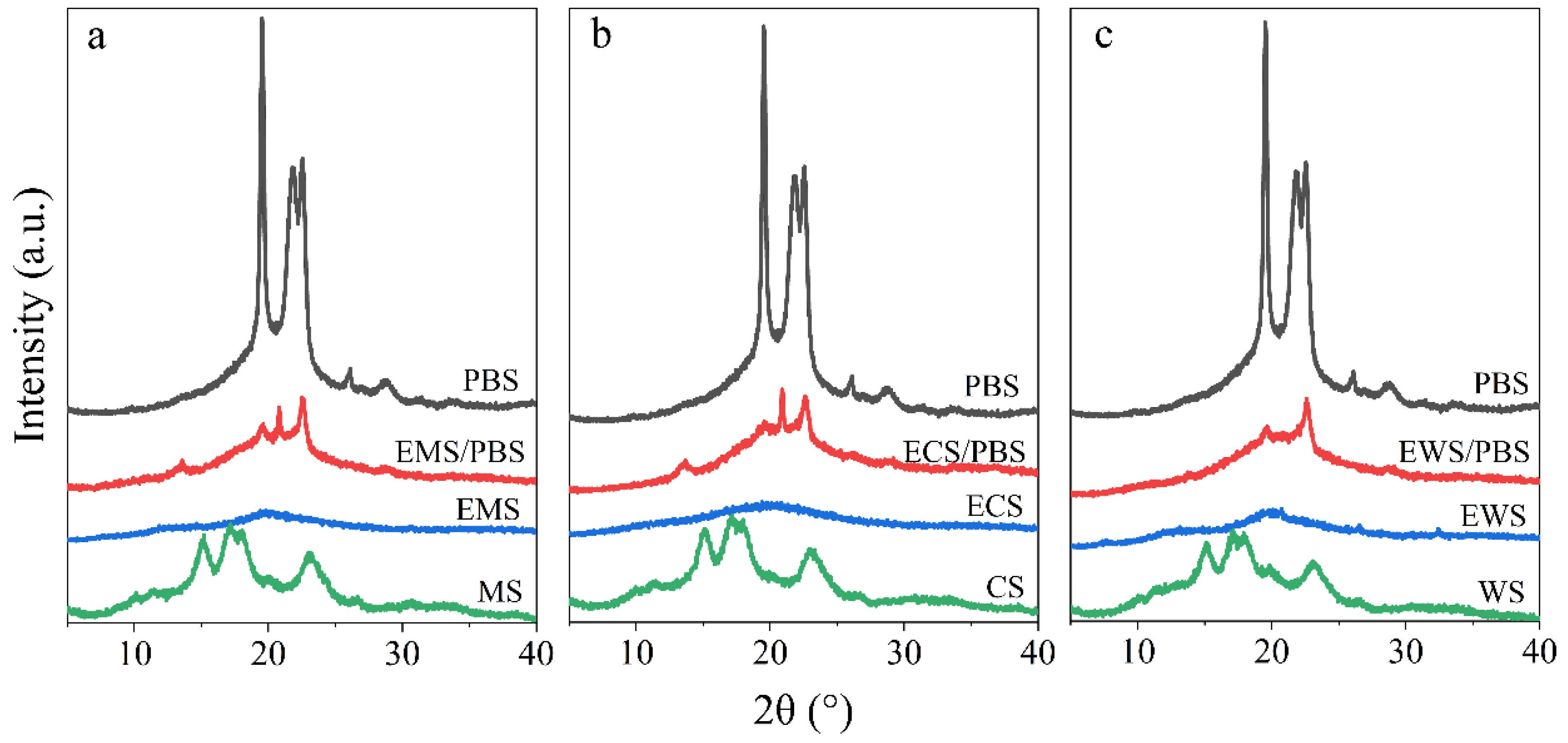
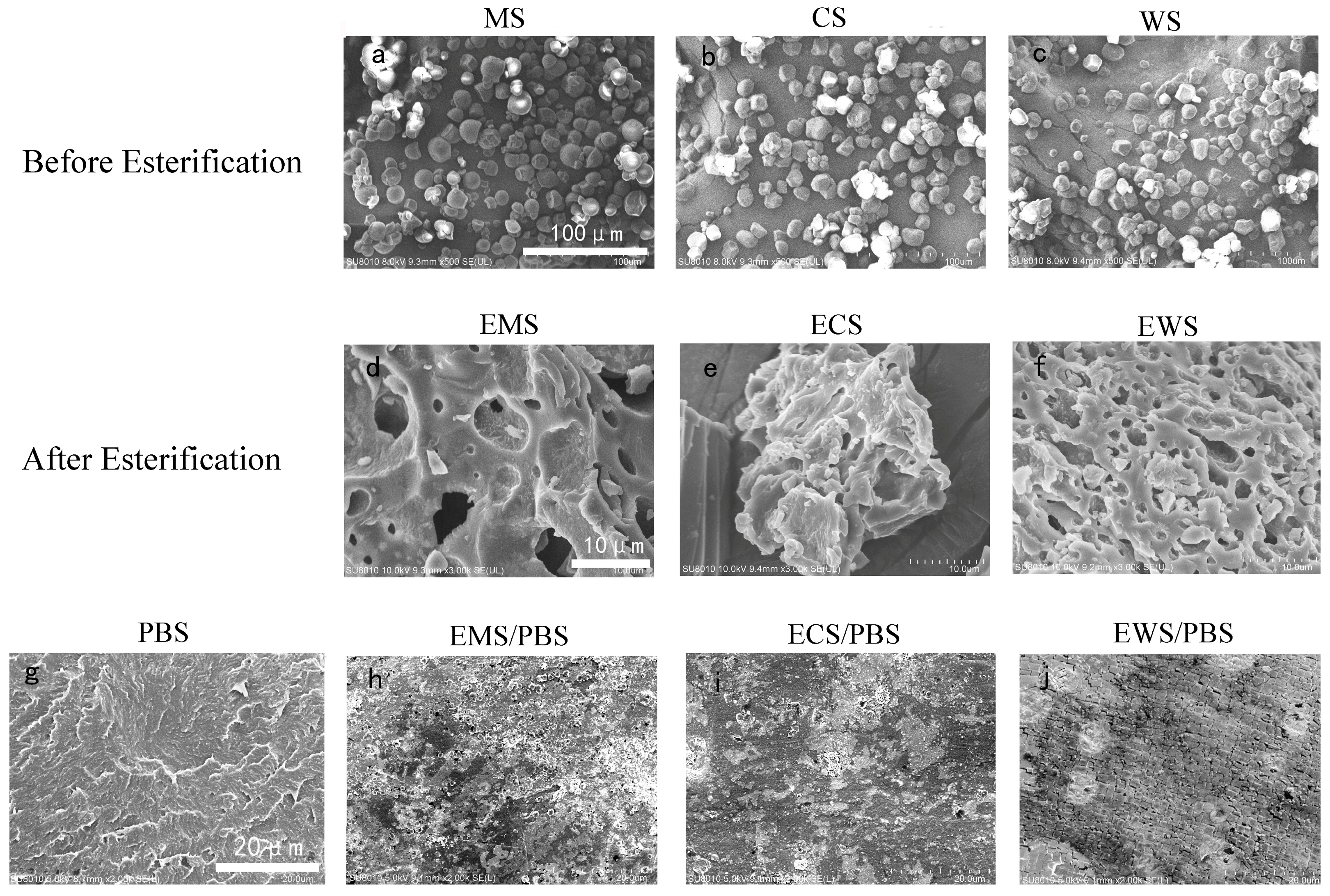
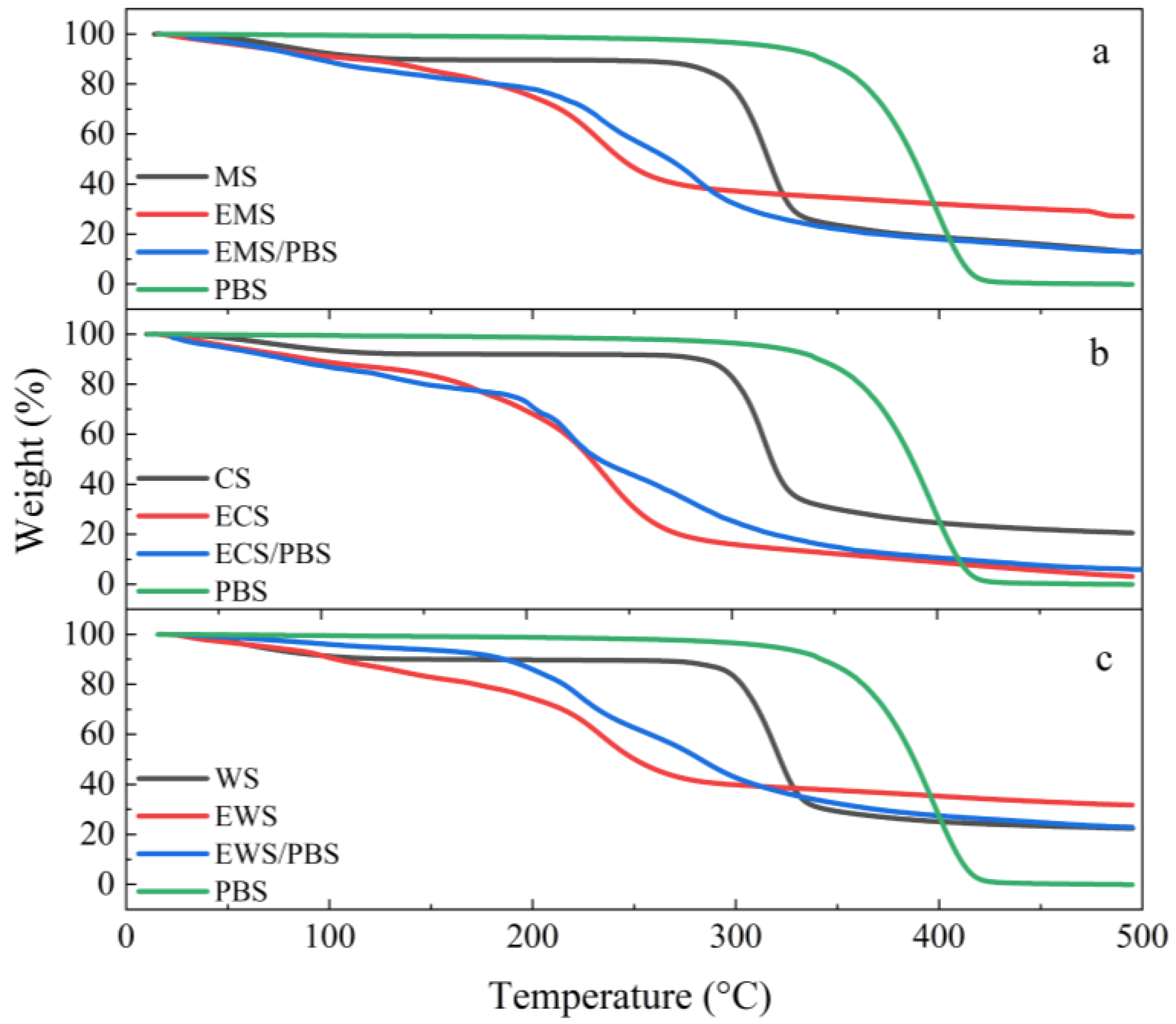
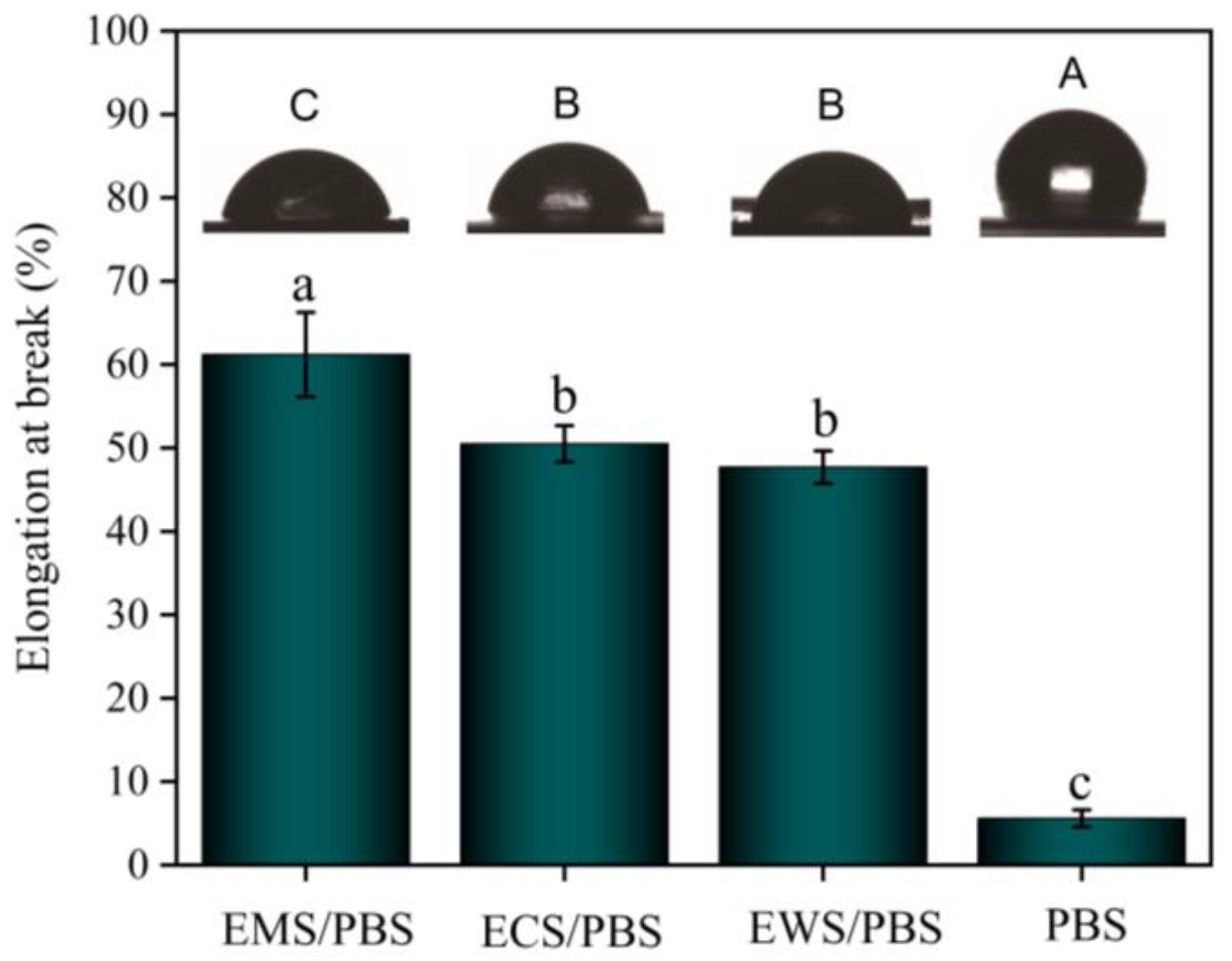
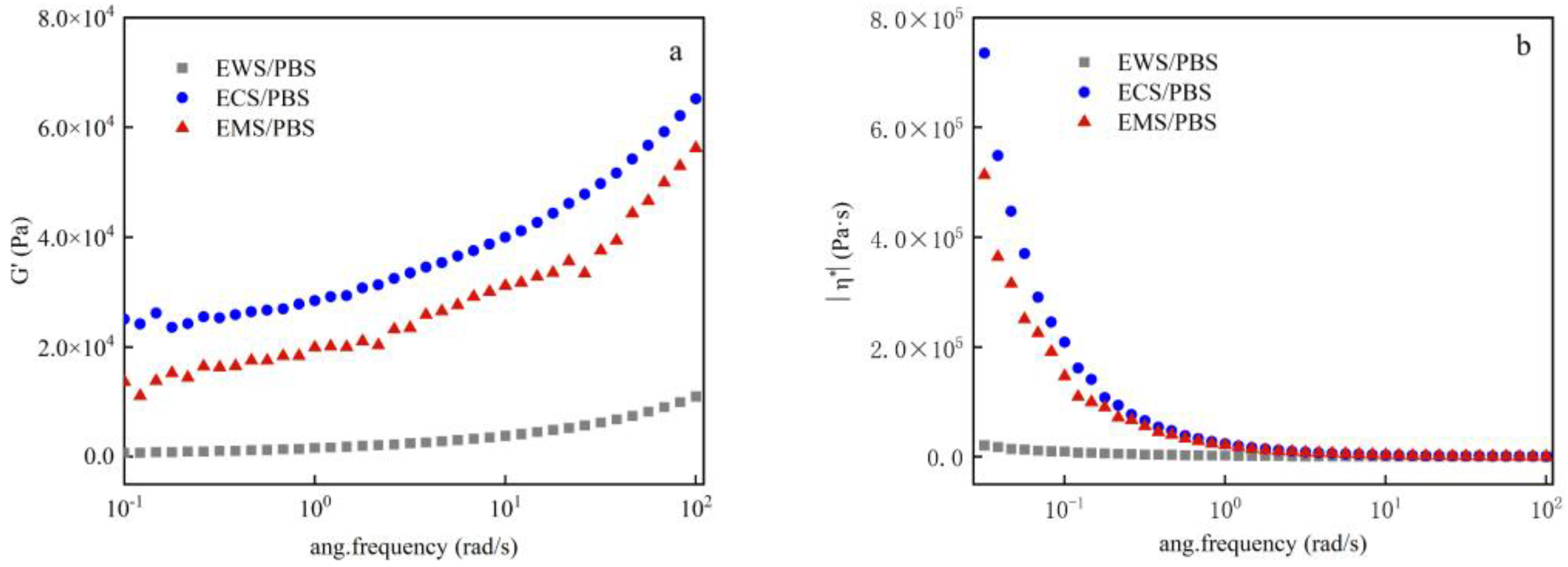

Disclaimer/Publisher’s Note: The statements, opinions and data contained in all publications are solely those of the individual author(s) and contributor(s) and not of MDPI and/or the editor(s). MDPI and/or the editor(s) disclaim responsibility for any injury to people or property resulting from any ideas, methods, instructions or products referred to in the content. |
© 2024 by the authors. Licensee MDPI, Basel, Switzerland. This article is an open access article distributed under the terms and conditions of the Creative Commons Attribution (CC BY) license (https://creativecommons.org/licenses/by/4.0/).
Share and Cite
Liu, S.; Tang, S.; Lu, Y.; Su, T.; Wang, Z. Preparation of Esterified Starches with Different Amylose Content and Their Blending with Polybutylene Succinate. Int. J. Mol. Sci. 2024, 25, 6301. https://doi.org/10.3390/ijms25126301
Liu S, Tang S, Lu Y, Su T, Wang Z. Preparation of Esterified Starches with Different Amylose Content and Their Blending with Polybutylene Succinate. International Journal of Molecular Sciences. 2024; 25(12):6301. https://doi.org/10.3390/ijms25126301
Chicago/Turabian StyleLiu, Shuning, Shi Tang, Yuanhao Lu, Tingting Su, and Zhanyong Wang. 2024. "Preparation of Esterified Starches with Different Amylose Content and Their Blending with Polybutylene Succinate" International Journal of Molecular Sciences 25, no. 12: 6301. https://doi.org/10.3390/ijms25126301




